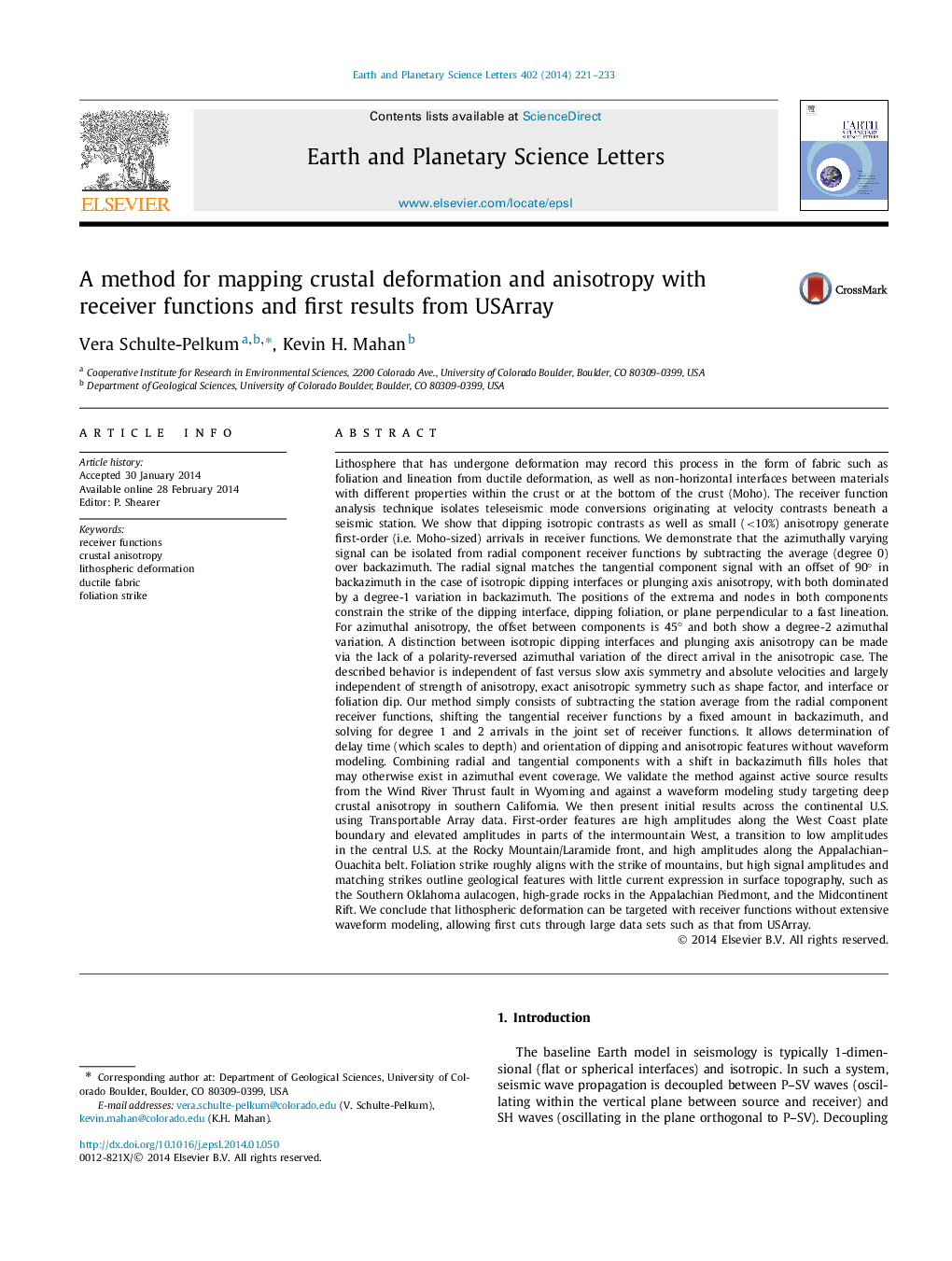| کد مقاله | کد نشریه | سال انتشار | مقاله انگلیسی | نسخه تمام متن |
|---|---|---|---|---|
| 4677011 | 1634754 | 2014 | 13 صفحه PDF | دانلود رایگان |

• Single station receiver functions map strike and depth of foliation and dipping structures.
• A few percent of contrast in crustal anisotropy generate first-order receiver function arrivals.
• Radial and tangential components can be combined to constrain interface and foliation strike.
• Results across USArray correlate with physiographic provinces and older inherited structures.
Lithosphere that has undergone deformation may record this process in the form of fabric such as foliation and lineation from ductile deformation, as well as non-horizontal interfaces between materials with different properties within the crust or at the bottom of the crust (Moho). The receiver function analysis technique isolates teleseismic mode conversions originating at velocity contrasts beneath a seismic station. We show that dipping isotropic contrasts as well as small (<10%) anisotropy generate first-order (i.e. Moho-sized) arrivals in receiver functions. We demonstrate that the azimuthally varying signal can be isolated from radial component receiver functions by subtracting the average (degree 0) over backazimuth. The radial signal matches the tangential component signal with an offset of 90° in backazimuth in the case of isotropic dipping interfaces or plunging axis anisotropy, with both dominated by a degree-1 variation in backazimuth. The positions of the extrema and nodes in both components constrain the strike of the dipping interface, dipping foliation, or plane perpendicular to a fast lineation. For azimuthal anisotropy, the offset between components is 45° and both show a degree-2 azimuthal variation. A distinction between isotropic dipping interfaces and plunging axis anisotropy can be made via the lack of a polarity-reversed azimuthal variation of the direct arrival in the anisotropic case. The described behavior is independent of fast versus slow axis symmetry and absolute velocities and largely independent of strength of anisotropy, exact anisotropic symmetry such as shape factor, and interface or foliation dip. Our method simply consists of subtracting the station average from the radial component receiver functions, shifting the tangential receiver functions by a fixed amount in backazimuth, and solving for degree 1 and 2 arrivals in the joint set of receiver functions. It allows determination of delay time (which scales to depth) and orientation of dipping and anisotropic features without waveform modeling. Combining radial and tangential components with a shift in backazimuth fills holes that may otherwise exist in azimuthal event coverage. We validate the method against active source results from the Wind River Thrust fault in Wyoming and against a waveform modeling study targeting deep crustal anisotropy in southern California. We then present initial results across the continental U.S. using Transportable Array data. First-order features are high amplitudes along the West Coast plate boundary and elevated amplitudes in parts of the intermountain West, a transition to low amplitudes in the central U.S. at the Rocky Mountain/Laramide front, and high amplitudes along the Appalachian–Ouachita belt. Foliation strike roughly aligns with the strike of mountains, but high signal amplitudes and matching strikes outline geological features with little current expression in surface topography, such as the Southern Oklahoma aulacogen, high-grade rocks in the Appalachian Piedmont, and the Midcontinent Rift. We conclude that lithospheric deformation can be targeted with receiver functions without extensive waveform modeling, allowing first cuts through large data sets such as that from USArray.
Journal: Earth and Planetary Science Letters - Volume 402, 15 September 2014, Pages 221–233